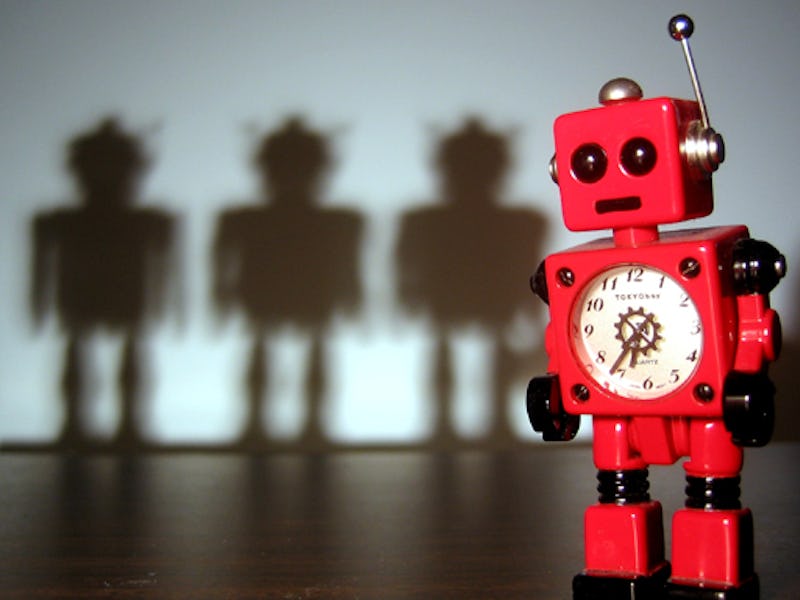The Deadliest Robots on the Planet and Why You Don't Need To Be Afraid Yet
Spoiler alert: They don't want to kill you.

In an open letter decrying autonomous weapons, Stephen Hawking, Elon Musk, and thousands of other very intelligent women and men recently voiced their concerns about killer robots. What has their hackles so raised is not Terminator-style malevolent AI, it’s drones programmed to destroy targets without human input. It’s serious stuff worth a second look, but also worthy of context. The truth is that robots have never actually been that good at killing people. Even in our automated age, the deadliest machines are really just accident prone.
A few caveats: These are raw numbers, not risks. That automated processes are truly safer than the alternative is hotly contested. Every accident involving a driverless car so far (and there have been no fatalities yet) has been found to be the fault of humans. Truly automatic automobiles should, by most estimates, reduce crashes. In today’s medical arena, however, the role of bots isn’t so cut and dry. Robot-assisted surgery makes operations safer, its proponents argue, by filtering out the tremor in human hands, for instance. A few surgeons are cooler on the technology, pointing to higher costs and slightly higher odds of complications (an increase from 6 percent to 7 percent of cases for ovarian cyst removal, one 2014 review found). Which brings us to:
Number One: Medical Robots:
144 in 14 years
A recent study in the journal arXiv.org, reviewing 14 years of data taken from FDA incident reports, found 144 deaths, more than a thousand injuries, and over 8,000 malfunctions. Most of the reports, the authors said, were a result of burning or broken pieces falling on patients, electrical problems, or unintended operations misusing the robotic equipment.
Number Two: Factory Robots
33 in 30 years
A Michigan man named Robert Williams had the unfortunate distinction of being the first person killed by a robot when, in 1979, he was crushed at a Ford Motor plant. In the three decades since, industrial robot fatalities have been rare — in the U.S., just 33 between 1984 and 2014 — but as the accident at a Volkswagen plant earlier in July demonstrates, they haven’t been elminated. The future looks less deadly, according to British roboticist Alan Winfield, as we start to develop robots that aren’t simply safer but ethical: That is, react with caution when humans find themselves in harm’s way.
Number Three Military Autocannons malfunctions
9 deaths in 2007
During a live-fire exercise, the software controlling a South African Defense Force anti-aircraft cannon is believed to have malfunctioned, unloading its 35mm guns, killing nine. It is also possible, however, that the failure was mechanical rather than digital, as the New Scientist pointed out. Either way, incidents like this are incredibly rare despite what you might see in video games.
Number Four: One South Korean Drone
1 death in 2012
The lethal elephants in the room are, of course, U.S. military drones, which have carried out more than 400 strikes in Pakistan. (Exact statistics of covert CIA strikes are, as you might expect, tough to come by.) Unlike the robotic arms in factories, these drones are not actually autonomous and require someone at a military base to remotely pull the trigger. In one of the very few instances of an autonomous commercial drone causing a death, a loss of GPS caused a South Korean device to crash into a truck, killing the 50-year-old aviation engineer inside.